“Creativity sure ain’t dead,” says juror Tim Roan. “It’s always inspiring to see so many new solutions to old problems. And I’m still seeing a dedication to craft, which I worry is being left behind in the modern race for speed and lack of budget.”
“Lots of range of work,” juror Andrés Ordóñez notes. “It felt like we are going back to simple, great ideas versus big ones with elaborate production.”
“Some entries caught me by surprise,” says juror Jessica Apellaniz. “The way some campaigns seamlessly integrated technology, storytelling and interactivity was unexpected and refreshing.”
“I think the entries overall were a great representation of the state of advertising right now,” juror Peter Nicholson says. “It’s a mixed bag. The idea is by far still suffering the most. The brand has become secondary in many cases to the execution. In a world of parody products and services, it is still the power of the brand that differentiates.”
“This year, I think it’s official that brand partnerships are a key opportunity to surprise and awaken new love,” says Roan.
“For me, award shows act like a mirror of how cultures are shifting and what is of interest to people,” juror Marie-Claire Maalouf says. “For a while now, we have been witnessing the rise in purpose-driven work, where brands are aligning with social and environmental causes, producing honest campaigns, and looking to earn people’s trust and respect by adding tangible value to their lives.”
Several jurors commented specifically on the work for Heinz ketchup.
“Heinz did some good work to reinforce that it is the supreme ketchup,” says Nicholson, “not through ketchup pours or food, but showing how AI interprets the prompt ketchup—and AI always got the iconic label and shape correct.”
“What was really surprising was to see Heinz entering a lot of unique work across different categories—using different techniques and trends, all nicely on purpose—and nailing it every time,” Maalouf says. “Big respect for the Heinz clients and the teams behind these projects for consistently producing good, solid work. They are doing something right and worth learning from.”
As a counterpoint to their positive comments, I asked the jurors to describe their biggest disappointments with the entries.
“While the overall quality was high, I was disappointed when the creative concept didn’t align well with the promoted message or product,” says Apellaniz.
“A lot of entries seemed to have brought to life the strategic proposition with decorative execution relying on AI and other trends and missed the step of crystalizing a strong creative idea—the ‘why’ we are talking,” Maalouf says.
“I found the student entries very polished aesthetically, which is great, but some of the ideas’ pre-polish could have done with more attention,” says juror Nicky Bullard.
“There were definitely campaigns and ideas that transcended new media, but I was hoping to see more of them compared to traditional media buys,” juror Alfred Wee says.
“I was hoping to see stronger work on traditional media,” says Ordóñez. “While all media are great, creating a great idea for radio or static is always harder. If you had to do a full case [study] for it, maybe it was missing something.”
I also asked the jurors how advertising is adapting to the changes in media.
“Slowly,” juror Amy Ferguson says. “In some cases, you see work that really pushes into unexpected places, but I still think we’re advertising to ourselves a lot of the time. If regular consumers don’t care or won’t see it, does it even matter?”
“Traditional channels—print, radio and TV—are no match for social media,” says juror Clarence Bradley. “Most people consume news and entertain-ment on mobile devices. I know that content integration (i.e., agencies and brands developing TV shows, films, long and short content in social and streaming) and reimagining what constitutes a TV commercial are our future. So are live experiences—in fact, I think brands and agencies innovating real world experiences is probably one of the few ways we’ll get people off their devices to engage with one another and with brands moving forward.”
“Entertainment is so good, plentiful and available—from TikTok to AppleTV and everywhere in between—that we, as brands and advertisers, must be really hard on ourselves,” Ferguson says. “We need to actually entertain consumers, and the competition has never been stiffer.”
“While gone are the days of the unique selling point, [brands need to] find a way into their story/product/offering that offers the viewer something distinct to enjoy,” says juror Jordan Doucette. “In other words, the partnership of strategy and creative has never been more important.”
“Advertising normally tends to move faster than everything, and while we might think sometimes that the world might be moving faster, if you step out, you realize we are not the ones behind,” Ordóñez says. “We just have to stay curious and relevant and make sure no one is ahead of our ideas.”
“For me, cracking ‘the idea’ will always supersede the concern of which media and channels to use,” says Maalouf. “Those are just support for a more focused reach. Learning about them is key, but they can never become the starting point. The human experience is.”
Lastly, I asked the judges what future business and cultural developments will dramatically alter the role of advertising.
“As advertising continues to evolve, emerging technologies like AI, AR and VR will likely play pivotal roles,” Apellaniz says. “Additionally, the growing emphasis on sustainability and social responsibility will impact how brands communicate their values to consumers.”
“I saw some AI-generated visuals in the work, and it was easy to spot,” says Bullard. “It can be super helpful as a tool to get us to great work quicker, but if we use it as a substitute, the work will all start feeling and looking the same.”
“Politically, the United States is struggling with the cultural shift of the ‘traditional’ American (white) family,” Bradley says. “The Hispanic community will be the majority, forcing the United States to be bilingual; LGBT+ families will be normalized, forcing the creation of new products and services; and the rise of a non–white-dominated middle, upper-middle and wealthy class will change everything we consume—food products, entertainment, travel and luxury items, among others. America will finally have to embrace its new normal.”
“I still believe the biggest challenge to advertising will continue to be the direct-to-consumer approach through social platforms,” says Nicholson. “The social algorithms are so good that asso-ciating products with your behavior is frictionless. Your feeds are advertising to you through entertainment. They set your desire and mood at that moment. The products or services don’t feel disruptive but complementary, and they can fulfill your state of mind.”
“Advertising is more than communications and targeting,” Wee says. “What separates the great ones are the ways storytelling is used in the work. What intrigues, surprises and fundamentally tries to engage the audience is the key to better work.”
“In essence, the future of advertising sounds like it will be shaped by a combination of tech advancement, evolving people behavior, societal values and regulatory changes,” says Maalouf. “Agencies who can navigate these changes while staying original, creative and adaptive and focusing on adding real value to people will be best positioned to succeed.”
A minimum of six out of ten votes was required for a project to be awarded in this year’s competition. Judges were not permitted to vote on projects with which they were directly involved; I voted in their stead. I would like to extend our grateful appreciation to our jurors for their conscientious efforts in selecting our 64th Advertising Annual. —Patrick Coyne ca
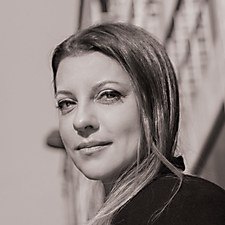
Jessica Apellaniz is executive creative director of Wieden+ Kennedy Mexico, the agency’s tenth global and first native Spanish–speaking office. She joined the agency in January 2023 after spending three years at Ogilvy as chief creative officer for Latin America. At Ogilvy, Apellaniz led the agency to win the first D&AD Pencil for Mexico and the first Cannes Lions for Honduras and Bolivia. Ogilvy Latin America was also named regional network of the year by Cannes in 2022. As one of the few women in a creative leading role across LATAM and a mother of two small children, Apellaniz is deeply committed to creating a more diverse, gender-balanced industry in the region and around the world.
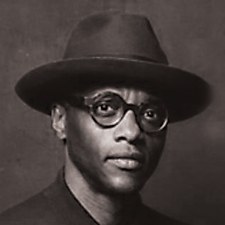
Clarence Bradley is a creative executive and consumer behaviorist who considers himself a hustler of culture. It’s a lyric from a Public Enemy song that struck him as the perfect description of a copywriter. After years of working from Los Angeles to London at places like Apple, BBDO, The Martin Agency, Wieden+ Kennedy and, most recently, as chief creative officer, North America at Campbell Ewald, he still loves making great work and meeting interesting people. He also teaches at The One School program and mentors senior and junior talent to lead and innovate as part of their creative and professional growth.
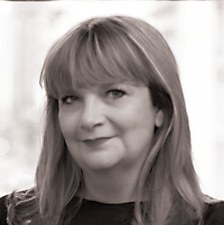
Nicky Bullard is group chief creative officer of MullenLowe UK in London, United Kingdom. When she joined MRM in 2016, Bullard became the agency’s first chief creative officer and the first creative woman to be named chairwoman of a UK marketing agency. In 2021, she was named MRM’s first European chair, as well as one of Ad Age’s Leading Women in Europe. Prior to MRM, she was executive creative director at LIDA, M&C Saatchi’s customer engagement group, winning Campaign’s Agency of the Year twice. Throughout her career, Bullard has created work and won awards in practically every discipline across every media.
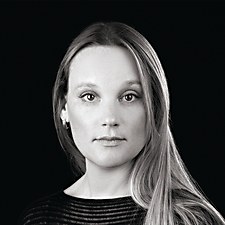
Jordan Doucette is chief creative officer of Dentsu Creative in Toronto, Canada. Prior to Dentsu, Doucette held chief creative officer positions at FCB West, Leo Burnett Chicago and TAXI. Doucette leads creative teams across multiple offices, and her work has been recognized by most major award shows, including Cannes, the CASSIES, the CLIO Awards and the One Show. She is also actively involved in the industry, participating in programs such as the Google WomenWill Conference and podcast series, the Cannes See It Be It Program, and she continues to push for the positive transformation of advertising to do meaningful work, that works.
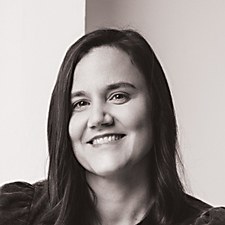
Amy Ferguson is chief creative officer of TBWA\Chiat\Day in New York. A creative problem solver, chronic exaggerator and mama to three boys, Ferguson is a well-known creative powerhouse. From earned, owned and paid media, she has a proven history of creating nontraditional creative campaigns. After completing TBWA\Chiat\Day New York’s Young Bloods creative program in 2004, Ferguson worked at Grey New York as an art director and MullenLowe U.S. as a creative director before returning to TBWA\Chiat\Day as an executive creative director in 2018. She has been named to Adweek’s Creative 100 list and Business Insider’s Most Creative Women in Advertising.
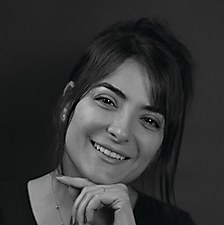
Marie-Claire Maalouf is chief creative officer at Edelman Middle East. Throughout her career, which started in 2006 at Impact BBDO Dubai, she worked on multiple initiatives and pro bono projects driven by her purpose to add value and better the life of others, one idea at a time. Maalouf’s work has earned numerous awards in most international and regional shows, including the Grand Prix at Cannes and the only Yellow Pencil by D&AD for the MENA region in 2022. In 2019, she was also earned the esteemed title of Next Creative Leader by the 3% Conference and The One Club for Creativity in Chicago.
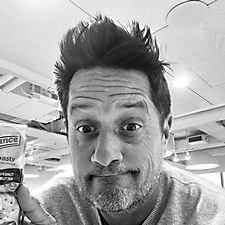
Peter Nicholson is chief creative officer of Hill Holliday, with offices in Boston and New York. With more than 20 years of experience, Nicholson is one of the few creative leaders who has worked across every category and vertical including new emerging markets such as crypto and blockchain tech-nology companies. He has previously served as chief creative officer for Deutsch NY, JWT North America, Periscope, Publicis NY and Red Scout. Throughout his career, he has consistently received accolades including Art Directors Club Cubes, Cannes Lions, D&AD Pencils, Effies, One Show Pencils and Webbys.
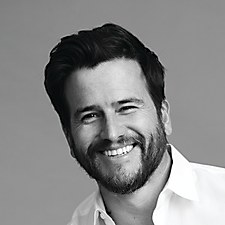
Andrés Ordóñez is chief creative officer at FCB Chicago and FCB West and is part of the FCB Global Creative Council. Having helped top brands shape their narratives for more than 20 years, Ordóñez was previously chief creative officer of Energy BBDO before joining FCB in 2019. That same year he was named to Adweek’s Creative 100 and, in 2021, was ranked the number-two chief creative officer in North America and number three globally by The One Show. He has received top industry accolades from the Art Directors Club, ANDYs, Cannes, CLIOs, D&AD, Effies, LIA, New York Festivals, The One Show and WARC.

Tim Roan is chief creative officer at Austin-based ad agency McGarrah Jessee. Prior, he held executive creative director positions at Away Travel and Lyft and creative director positions at BBDO New York, Mullen and Wieden+Kennedy. He also was an account guy, was in two rock and/or roll bands, and was a writer and performer on a sketch comedy TV show. He’s been recognized by some very nice organizations: ADC, Addy, Lürzer's Archive, Cannes, CLIO, Communication Arts, D&AD, Directory, Echo, Epica, London International, Radio Mercury Awards, New York Festivals, Obie, The One Show and The Webby Awards.
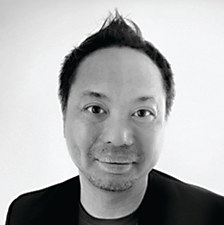
Alfred Wee is executive creative director at McCann Worldgroup Singapore. At McCann, Wee heads the first public sector practice in Singapore, driving social impact and reshaping citizen behaviors. With more than 20 years of experience on regional and local brands, Wee has been recognized in major international award shows, including ADFEST, Cannes, CLIOs, D&AD, Effies, LIA, New York Festivals, The One Show and Spikes Asia. His passion for inspiring the next generation of creative minds has kept him engaged with several programs, including The Crowbar Awards, and as an advisory member for institutions and universities.